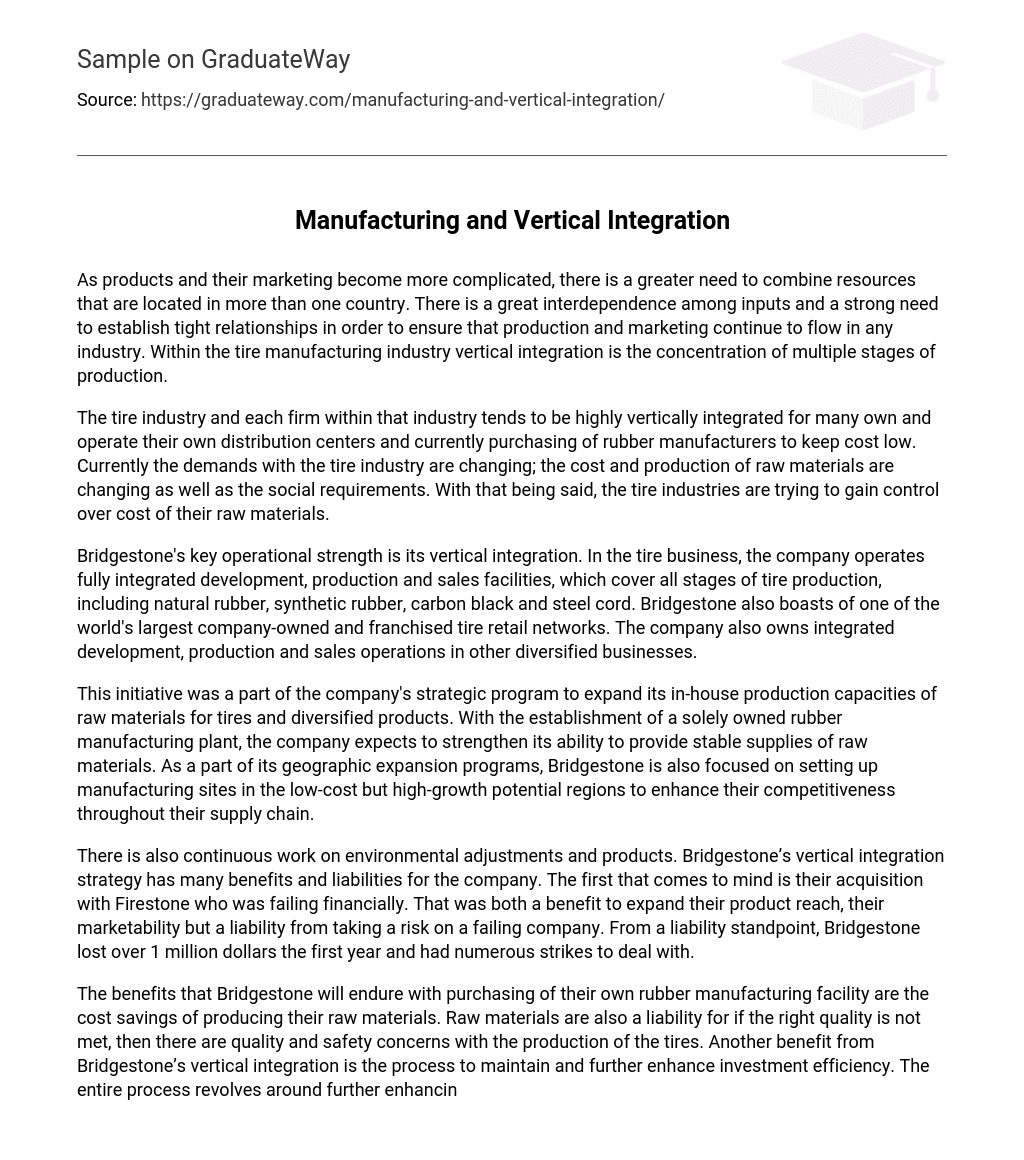As products and their marketing become more complicated, there is a greater need to combine resources that are located in more than one country. There is a great interdependence among inputs and a strong need to establish tight relationships in order to ensure that production and marketing continue to flow in any industry. Within the tire manufacturing industry vertical integration is the concentration of multiple stages of production.
The tire industry and each firm within that industry tends to be highly vertically integrated for many own and operate their own distribution centers and currently purchasing of rubber manufacturers to keep cost low. Currently the demands with the tire industry are changing; the cost and production of raw materials are changing as well as the social requirements. With that being said, the tire industries are trying to gain control over cost of their raw materials.
Bridgestone’s key operational strength is its vertical integration. In the tire business, the company operates fully integrated development, production and sales facilities, which cover all stages of tire production, including natural rubber, synthetic rubber, carbon black and steel cord. Bridgestone also boasts of one of the world’s largest company-owned and franchised tire retail networks. The company also owns integrated development, production and sales operations in other diversified businesses.
This initiative was a part of the company’s strategic program to expand its in-house production capacities of raw materials for tires and diversified products. With the establishment of a solely owned rubber manufacturing plant, the company expects to strengthen its ability to provide stable supplies of raw materials. As a part of its geographic expansion programs, Bridgestone is also focused on setting up manufacturing sites in the low-cost but high-growth potential regions to enhance their competitiveness throughout their supply chain.
There is also continuous work on environmental adjustments and products. Bridgestone’s vertical integration strategy has many benefits and liabilities for the company. The first that comes to mind is their acquisition with Firestone who was failing financially. That was both a benefit to expand their product reach, their marketability but a liability from taking a risk on a failing company. From a liability standpoint, Bridgestone lost over 1 million dollars the first year and had numerous strikes to deal with.
The benefits that Bridgestone will endure with purchasing of their own rubber manufacturing facility are the cost savings of producing their raw materials. Raw materials are also a liability for if the right quality is not met, then there are quality and safety concerns with the production of the tires. Another benefit from Bridgestone’s vertical integration is the process to maintain and further enhance investment efficiency. The entire process revolves around further enhancing their quality of products and strengthening their internal manufacturing.





